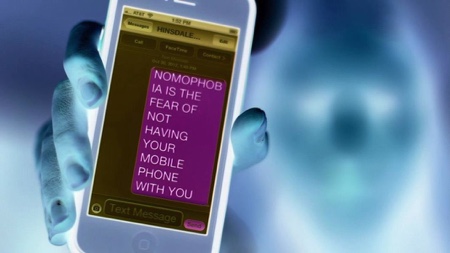
On Feb. 13th, I’ll be doing a FREE Webinar for nonprofits hosted by Salesforce Foundation on “Combatting Digital Distraction and Technology Wellness in the Nonprofit Workplace.” Come join me.
Ever hear of something called “Nomophobia? The word itself is an abbreviation for ‘no-mobile-phone-phobia’ and refers to the anxiety you feel when you don’t have your mobile phone handy or have a signal. It is one of a growing number of “digital diseases” that can cause painful physical symptoms as well as mental health issues that ultimately make you less productive, depressed, and sick.
Our use of digital devices, apps, email, and social media (even for work purposes) has crossed the line into an unhealthy relationship. For some, it has become a behavioral addiction. Bring these habits and behaviors into the workplace and we create an toxic environment that threatens our wellbeing and resilience to do the important work that nonprofits need to do.
The benefits of taking control of your digital life in and outside the office are immense: greater presence and mindful attention, enhanced productivity and creativity, better relationships, improved sleep and less risk of anxiety. Bring these benefits into a nonprofit workplace, and perhaps some of the stress levels will go down. We wrote about this in depth in the book, The Happy Healthy Nonprofit.
Here are a few tips for nonprofits.
- Admit It, You Are On Your Mobile Phone Too Much: Self-awareness is the first step to changing habits. Start to notice how much time you are on your phone and what you are doing. Apps like Moment can help you monitor. You can make it fun to put down your phone using the Forest app (better than locking it in a closet.
- Turn Off the Damn Screen and Go For A Walk: Sitting in front of a screen for too long can cause eye strain, neck problems, and other pain. Worst, there is trouble at the top: brain fog. A quick fix is take a walk – even if you just go down the hall and back. Moving reboots your concentration and replenishes energy. (But leave your mobile phone behind and if you are tempted to take it with you re-read Tip 1 and book a session with Mindful Techie who works with nonprofit professionals.
- Practice 20/20/20 for 20/20: Eye strain is a common workplace complaint.Symptoms include headaches, dry eyes, red eyes, trouble seeing clearly even wearing glasses, and more. One trick to reduce the impact of eye strain that I learned from a grantee of the Moses Taylor Foundation’s Healthy Workplace Initiative was something called 20-20-20. Every 20 minutes, take a break and look 20 feet ahead for 20 seconds to rest one’s eyes from the screen.
- Break Your Breaking News Addiction: We need to get rid of all those breaking news alerts on our mobile phones, especially if there is a notification sound and it pops up on our tiny screen screaming “read me”. It breaks our attention and we are training ourselves how to distract ourselves. I’m not saying don’t consume breaking news at all, just consume breaking news mindfully
- Create Non-Digital Space in the Morning and Evenings: Don’t have the last thing you do at night and the first thing you do in the morning be looking at work email, or Facebook or breaking news. If you are looking at any screen before brushing your teeth in the morning, stop. Create a different evening routine that let’s you say goodnight iphone an hour or two before bedtime. Here’s some tips.
- Scramble Your Apps on Mobile Phone to Change Bad Patterns: Your thumbs have memory – and if you mindlessly pick your phone up and start tapping – before you know it you are in a repetitive loop of checking everything. Here’s more advice about disrupting non-productive use of your mobile phone and avoid addiction.
Come join me for this FREE webinar hosted by Salesforce Foundation on February 13th. I’ll not only be talking about personal use habits for nonprofit professionals but how to bring technology wellness into the workplace as a cultural norm.
What’s your favorite tip for guarding against digital diseases? How does your nonprofit focus on technology wellness in your workplace?

Leave a Reply